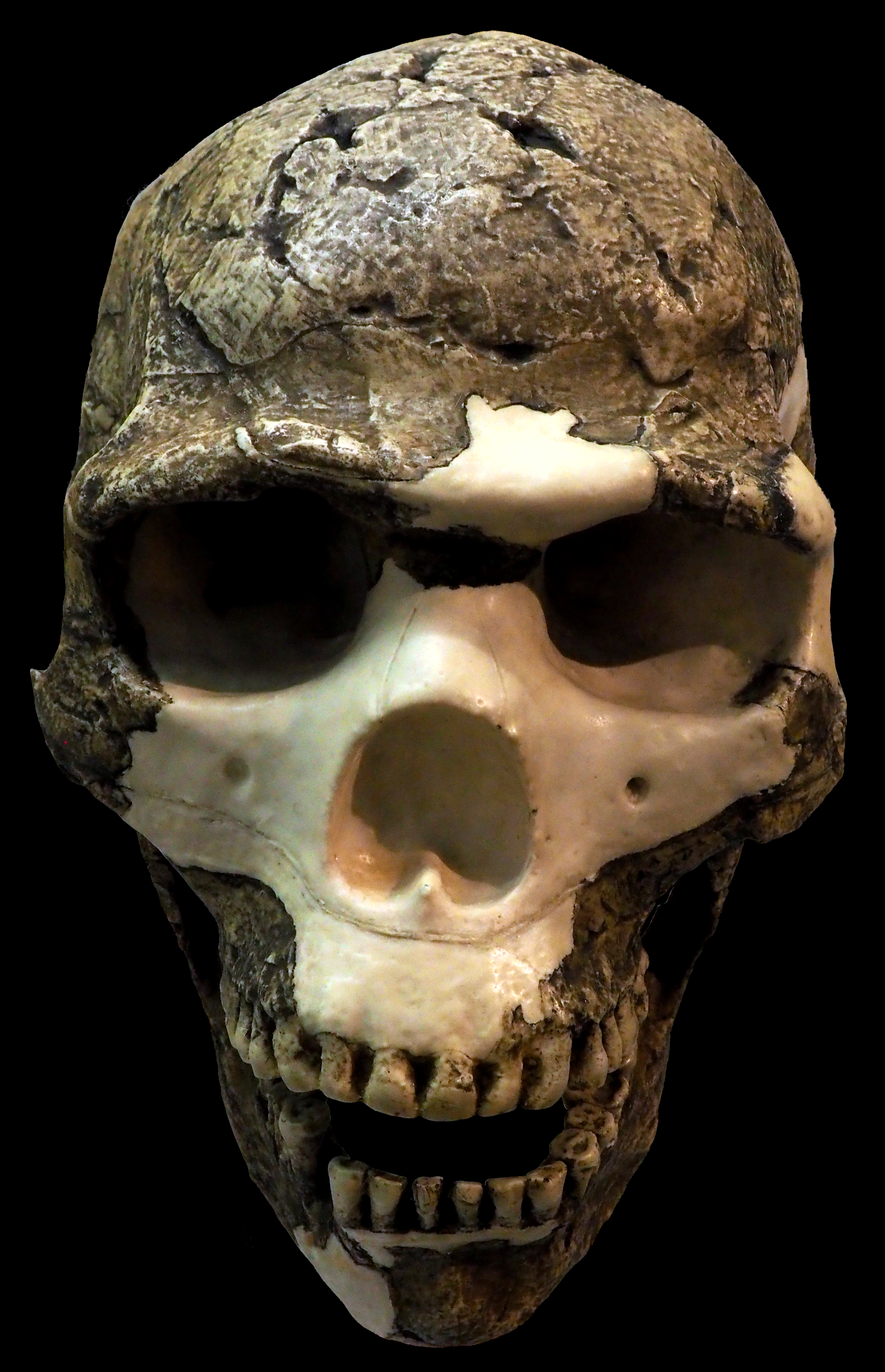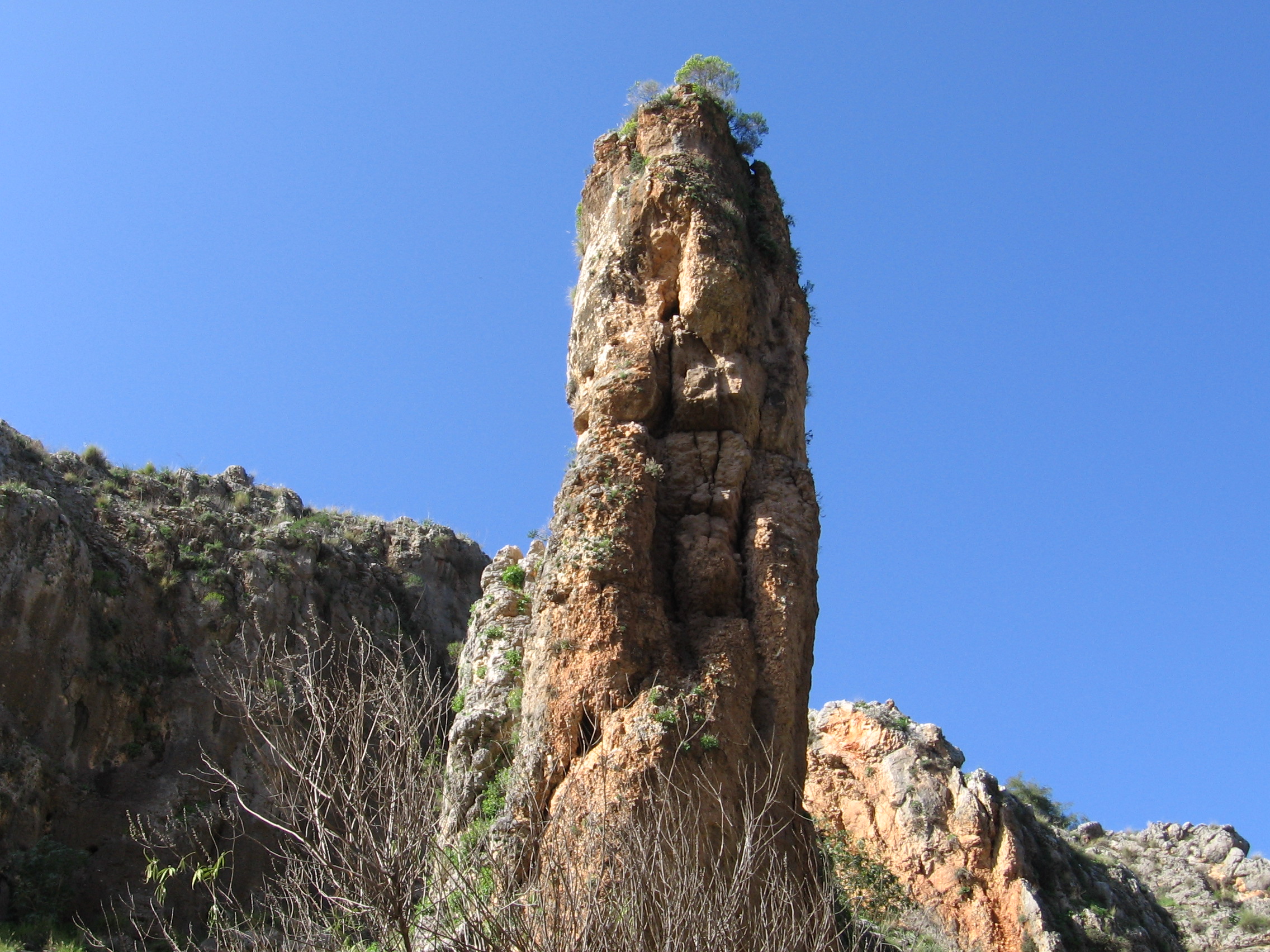|
Zuttiyeh
Mugharet el-Zuttiyeh ("Cave of the Robbers") is a prehistoric archaeological site in Upper Galilee, Israel. It is situated from the Nahal Amud outlet, approximately above the wadi bed ( below sea level). It was found to house a fossil today known as the "Galilee skull" or "The Yabrudian Man". History Discovered in 1925, the skull was the first fossilised archaic human found in Western Asia. Together with the remains found at Es Skhul and the Wadi el-Mughara Caves, this find was classified in 1939 by Arthur Keith and as ''Palaeoanthropus palestinensis''. Today its taxonomy is that of '' Homo heidelbergensis''. Zuttiyeh cave is at the opening of a limestone ravine where Nahal Amud turns eastward, above a smaller cave known as Mugharet el-Emireh (Cave of the Princess). The cave was excavated from 1925 to 1926 by Francis Turville-Petre. It was the first paleontological excavation in the region. Turville-Petre discovered a skull, referred to as the ''Galilee Skull'', that wa ... [...More Info...] [...Related Items...] OR: [Wikipedia] [Google] [Baidu] |
Francis Turville-Petre
Francis Adrian Joseph Turville-Petre (4 March 1901 – 16 August 1942) was a British archaeologist, famous for the discovery of the ''Homo heidelbergensis'' fossil Galilee Man in 1926, and for his work at Mount Carmel, in what was then the British Mandate of Palestine, now Israel. He was a close friend of Christopher Isherwood and W. H. Auden. Life Francis Turville-Petre was born into a Catholic, landed gentry family in England, the oldest of the five children of Oswald and Margaret Petre (née Cave). He was the older brother of Gabriel Turville-Petre, the noted scholar of Icelandic and early Scandinavian. The family moved to the ancestral home of Bosworth Hall, Husbands Bosworth, Leicestershire in 1907. Turville-Petre went up to Exeter College, Oxford in 1920. He was admitted as a Diploma student in Anthropology at Michaelmas Term, 1921, studying physical anthropology and cultural anthropology (ethnology with archaeology and technology at the Pitt Rivers Museum). He was awar ... [...More Info...] [...Related Items...] OR: [Wikipedia] [Google] [Baidu] |
Acheulo-Yabrudian Complex
The Acheulo-Yabrudian complex is a complex of archaeological cultures in the Levant at the end of the Lower Palaeolithic. It follows the Acheulian and precedes the Mousterian. It is also called the Mugharan Tradition or the Acheulo-Yabrudian Cultural Complex (AYCC). The Acheulo-Yabrudian complex has three stone-tool traditions, chronologically: the Acheulo-Yabrudian, the Yabrudian and the Pre-Aurignacian or Amudian. The Yabrudian tradition is dominated by thick Scraper (archaeology), scrapers shaped by steep Quina retouch; the Acheuleo-Yabrudian contains Yabrudian scrapers and handaxes; and the Pre-Aurignacian/Amudian is dominated by Blade (archaeology), blades and blade-tools. Dating Determining the age period for the Acheulo-Yabrudian has been difficult as its major excavations occurred in the 1930s and 1950s before modern radiometric dating. The recently excavated Qesem Cave, Qesem and Tabun Cave, Tabun caves, however, suggest the oldest period is about 350 kyr and the most rece ... [...More Info...] [...Related Items...] OR: [Wikipedia] [Google] [Baidu] |
Skhul And Qafzeh Hominids
The Skhul/Qafzeh hominins or Qafzeh–Skhul early modern humans are hominin fossils discovered in Es-Skhul and Qafzeh caves in Israel. They are today classified as ''Homo sapiens'', among the earliest of their species in Eurasia. Skhul Cave is on the slopes of Mount Carmel; Qafzeh Cave is a rockshelter near Nazareth in Lower Galilee. The remains found at Es Skhul, together with those found at the Nahal Me'arot Nature Reserve and Mugharet el-Zuttiyeh, were classified in 1939 by Arthur Keith and Theodore D. McCown as ''Palaeoanthropus palestinensis'', a descendant of ''Homo heidelbergensis''. History The remains exhibit a mix of traits found in archaic and anatomically modern humans. They have been tentatively dated at about 80,000-120,000 years old using electron paramagnetic resonance and thermoluminescence dating techniques. The brain case is similar to modern humans, but they possess brow ridges and a projecting facial profile like Neanderthals. They were initially regar ... [...More Info...] [...Related Items...] OR: [Wikipedia] [Google] [Baidu] |
Nahal Amud
Nahal Amud ( he, נחל עמוד), also known as the Wadi al-Amud, is a stream in the Upper Galilee region of Israel that flows into the Sea of Galilee. History The source of the stream, Ramat Dalton, is located 800 meters above sea level. Its drainage basin includes the peaks of Birya Fortress, Mount Canaan (955 meters) and Mount Meron (1,204 meters) and flows south through eastern Galilee to the northwest part of the Sea of Galilee – a height of less than 200 meters below sea level. The stream is named after a Column, pillar that rises high above ground and is located near a channel of the stream near Kibbutz Hukok. The gorge that forms the channel at this point holds many caves once inhabited by ''Homo heidelbergensis'' and later by Neanderthal Man such as the cave at Zuttiyeh and the Amud cave. They were the object of the first Paleoanthropology, paleoanthropological excavations in Mandatory Palestine in 1925–1926. The caves contained hominin remains as well as Mousterian ... [...More Info...] [...Related Items...] OR: [Wikipedia] [Google] [Baidu] |
Archaeology Of Israel
The archaeology of Israel is the study of the archaeology of the present-day Israel, stretching from prehistory through three millennia of documented history. The ancient Land of Israel was a geographical bridge between the political and cultural centers of Mesopotamia and Egypt. Despite the importance of the country to three major religions, serious archaeological research only began in the 15th century.''Encyclopedia of Zionism and Israel'', edited by Raphael Patai, Herzl Press and McGraw-Hill, New York, 1971, vol. I, pp. 66–71 Although he never travelled to the Levant, or even left the Netherlands, the first major work on the antiquities of Israel is considered to be Adriaan Reland's ''Antiquitates Sacrae veterum Hebraeorum,'' published in 1708. Edward Robinson, an American theologian who visited the country in 1838, published its first topographical studies. Lady Hester Stanhope performed the first modern excavation at Ashkelon in 1815. A Frenchman, Louis Felicien de Sau ... [...More Info...] [...Related Items...] OR: [Wikipedia] [Google] [Baidu] |
Es Skhul
Es-Skhul (es-Skhūl, ar, السخول; meaning ''kid'', ''young goat'') or the Skhul Cave is a prehistoric cave site situated about south of the city of Haifa, Israel, and about from the Mediterranean Sea. Together with the nearby sites of Tabun Cave, Jamal cave, and the cave at El Wad, Skhul is part of the Nahal Me'arot Nature Reserve, a national park and UNESCO World Heritage Site. The site was first excavated by Dorothy Garrod during summer of 1929. Several human skeletons were found in the cave, belonging to an ancient species of Homo sapiens. Both Neanderthals – and anatomically modern humans were present in the region from 200,000 to 45,000 years ago – around 100,000 years ago. The remains found at es-Skhul, together with those found at the other caves of Wadi el-Mughara and Mugharet el-Zuttiyeh, were classified in 1939 by Arthur Keith and as ''Palaeoanthropus palestinensis'', a descendant of ''Homo heidelbergensis''. [...More Info...] [...Related Items...] OR: [Wikipedia] [Google] [Baidu] |
Israel
Israel (; he, יִשְׂרָאֵל, ; ar, إِسْرَائِيل, ), officially the State of Israel ( he, מְדִינַת יִשְׂרָאֵל, label=none, translit=Medīnat Yīsrāʾēl; ), is a country in Western Asia. It is situated on the southeastern shore of the Mediterranean Sea and the northern shore of the Red Sea, and shares borders with Lebanon to the north, Syria to the northeast, Jordan to the east, and Egypt to the southwest. Israel also is bordered by the Palestinian territories of the West Bank and the Gaza Strip to the east and west, respectively. Tel Aviv is the economic and technological center of the country, while its seat of government is in its proclaimed capital of Jerusalem, although Israeli sovereignty over East Jerusalem is unrecognized internationally. The land held by present-day Israel witnessed some of the earliest human occupations outside Africa and was among the earliest known sites of agriculture. It was inhabited by the Canaanites ... [...More Info...] [...Related Items...] OR: [Wikipedia] [Google] [Baidu] |
Upper Galilee
The Upper Galilee ( he, הגליל העליון, ''HaGalil Ha'Elyon''; ar, الجليل الأعلى, ''Al Jaleel Al A'alaa'') is a geographical-political term in use since the end of the Second Temple period. It originally referred to a mountainous area straddling what today is northern Israel and southern Lebanon. The boundaries of this area were the Litani River in the north, the Mediterranean Sea in the west, the Lower Galilee in the south (from which it is separated by the Beit HaKerem Valley), and the upper Jordan River and the Hula Valley in the east. According to the 1st-century historian Josephus, the bounds of Upper Galilee stretched from Bersabe in the Beit HaKerem Valley to Baca (Peki'in) in the north. The extent of this region is approximately 470 km². However, in present-day Israeli usage, the toponym mainly refers only to the northern part of the Galilee that is under Israeli sovereignty. That is, the term today does not include the portion of Southern Leban ... [...More Info...] [...Related Items...] OR: [Wikipedia] [Google] [Baidu] |
Mousterian
The Mousterian (or Mode III) is an archaeological industry of stone tools, associated primarily with the Neanderthals in Europe, and to the earliest anatomically modern humans in North Africa and West Asia. The Mousterian largely defines the latter part of the Middle Paleolithic, the middle of the West Eurasian Old Stone Age. It lasted roughly from 160,000 to 40,000 BP. If its predecessor, known as Levallois or Levallois-Mousterian, is included, the range is extended to as early as 300,000–200,000 BP. The main following period is the Aurignacian (c. 43,000–28,000 BP) of ''Homo sapiens''. Naming The culture was named after the type site of Le Moustier, three superimposed rock shelters in the Dordogne region of France. Similar flintwork has been found all over unglaciated Europe and also the Near East and North Africa. Handaxes, racloirs, and points constitute the industry; sometimes a Levallois technique or another prepared-core technique was employed in m ... [...More Info...] [...Related Items...] OR: [Wikipedia] [Google] [Baidu] |
List Of Human Evolution Fossils
The following tables give an overview of notable finds of Hominini, hominin fossils and Skeleton, remains relating to human evolution, beginning with the formation of the tribe Hominini (the divergence of the Chimpanzee–human last common ancestor, human and chimpanzee lineages) in the late Miocene, roughly 7 to 8 million years ago. As there are thousands of fossils, mostly fragmentary, often consisting of single bones or isolated teeth with complete skulls and skeletons rare, this overview is not complete, but show some of the most important findings. The fossils are arranged by approximate age as determined by radiometric dating and/or incremental dating and the species name represents current consensus; if there is no clear scientific consensus the other possible classifications are indicated. The early fossils shown are not considered ancestors to ''Homo sapiens'' but are closely related to ancestors and are therefore important to the study of the lineage. After 1.5 million ... [...More Info...] [...Related Items...] OR: [Wikipedia] [Google] [Baidu] |
Israel Museum
The Israel Museum ( he, מוזיאון ישראל, ''Muze'on Yisrael'') is an art and archaeological museum in Jerusalem. It was established in 1965 as Israel's largest and foremost cultural institution, and one of the world’s leading encyclopaedic museums. It is situated on a hill in the Givat Ram neighborhood of Jerusalem, adjacent to the Bible Lands Museum, the Knesset, the Israeli Supreme Court, and the Hebrew University of Jerusalem. Its holdings include the world's most comprehensive collections of the archaeology of the Holy Land, and Jewish art and life, as well as significant and extensive holdings in the fine arts, the latter encompassing eleven separate departments: Israeli Art, European Art, Modern Art, Contemporary Art, Prints and Drawings, Photography, Design and Architecture, Asian Art, African Art, Oceanic Art, and Arts of the Americas. Among the unique objects on display are the Venus of Berekhat Ram, the interior of a 1736 Zedek ve Shalom synagogue from Sur ... [...More Info...] [...Related Items...] OR: [Wikipedia] [Google] [Baidu] |







